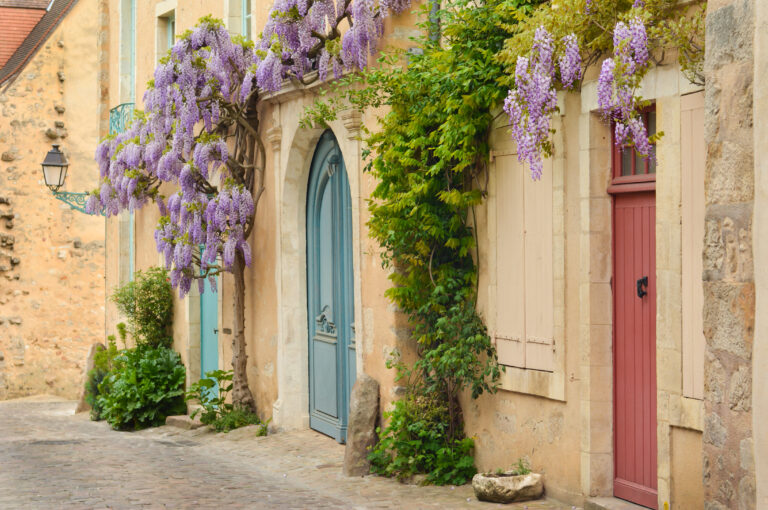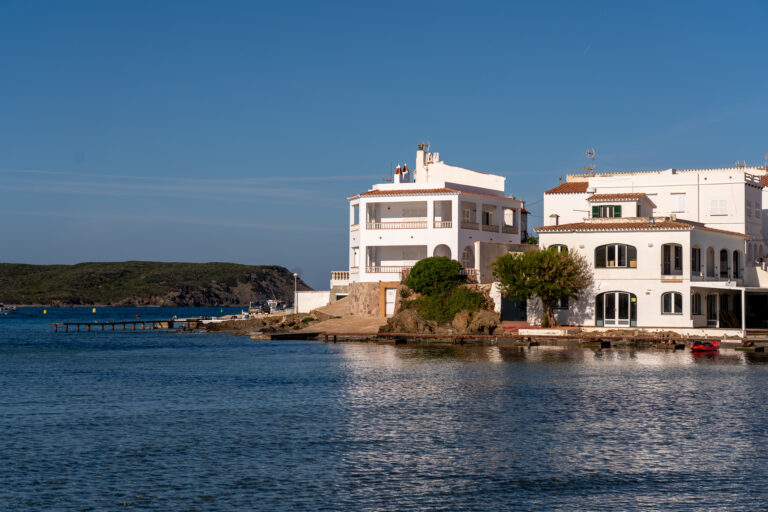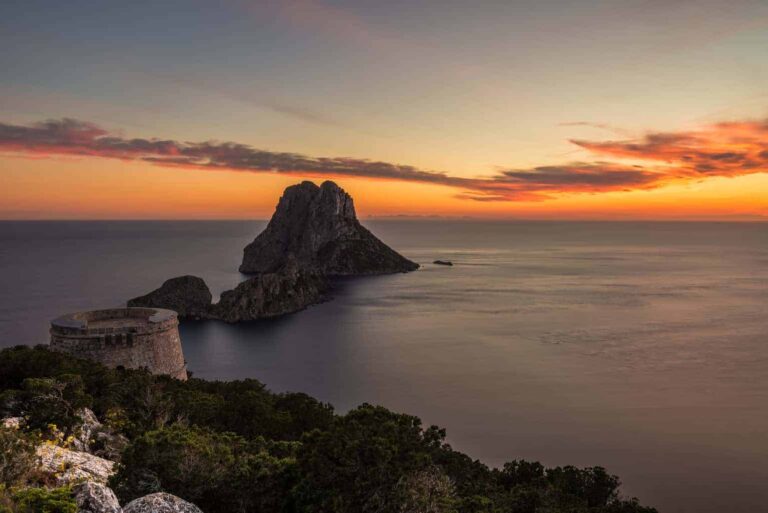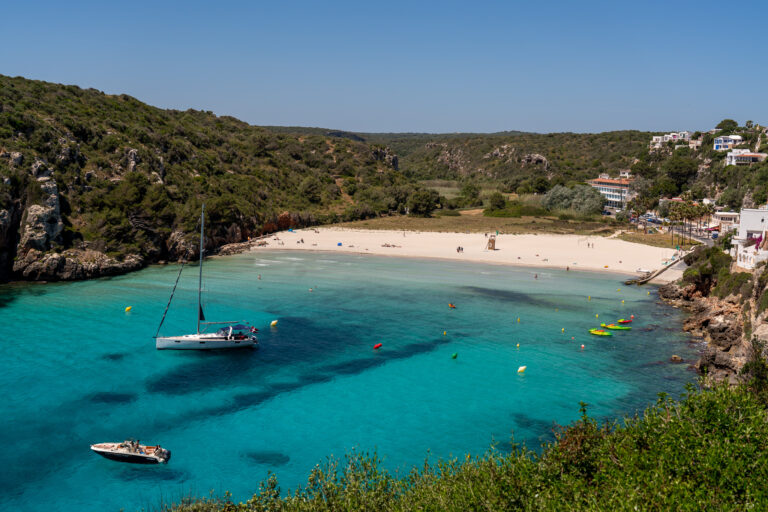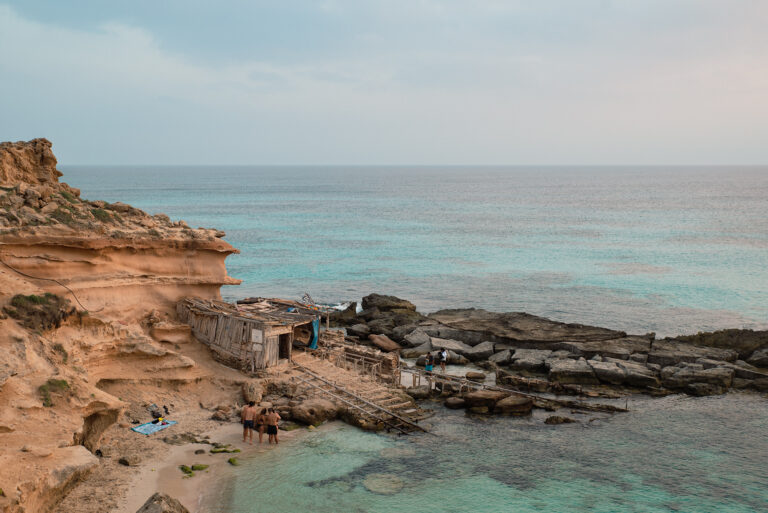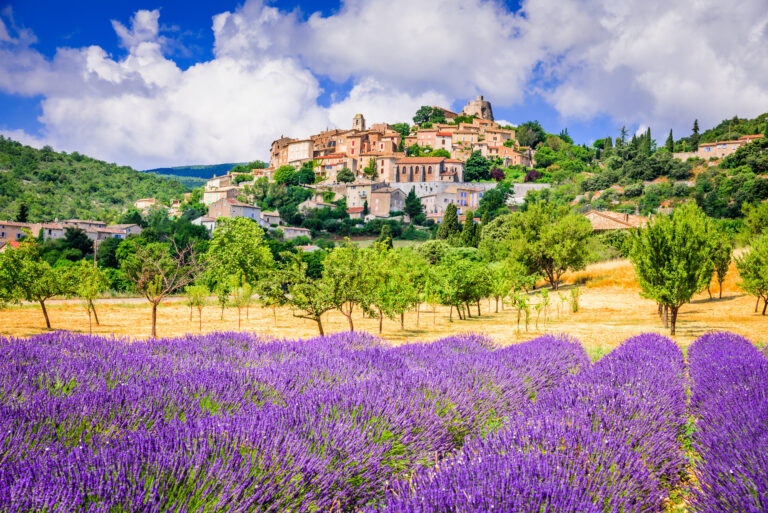Winter in Seville, Spain (Best Things to do & See)
Visiting Seville in winter is an absolute treat. The city is a dazzling jewel of Andalucía’s crown, captivating visitors with its rich history, Moorish architecture and vibrant cultural traditions.
If this is your first visit, you’ll notice that the city of Seville sits aside the Guadalquivir river. It was once a trading gateway for ships heading to the Mediterranean Sea and Atlantic Ocean from the interior of Spain.
At one side of the river are the main attractions: Seville Cathedral, La Giralda, the Real Alcázar and Plaza de España. On the opposite side is Triana, a working-class neighbourhood – the birthplace of Flamenco and home to lively produce markets and traditional ceramic workshops.
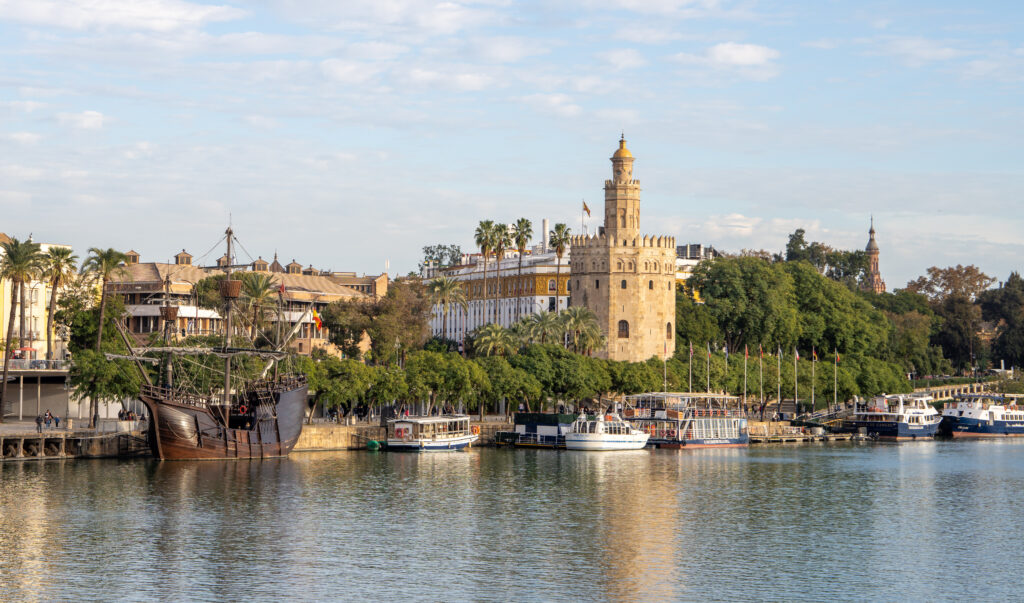
There’s much to see and do in the city throughout the winter season. You can spend leisurely days exploring museums and royal palaces, get cosy in centuries-old tapas bars or even browse festive markets and go ice skating! So, let’s take a look at the best things to do during a winter city break in Seville.
Seville Winter Weather
Wintertime in Seville hits different. In general, it’s fairly warm, you’ll likely be bathed in golden sun and blue skies, and you’ll enjoy more hours of daylight than the region’s more northerly neighbours. That said, it still pays to pack for a variety of weather situations as one day can be completely different to the next!
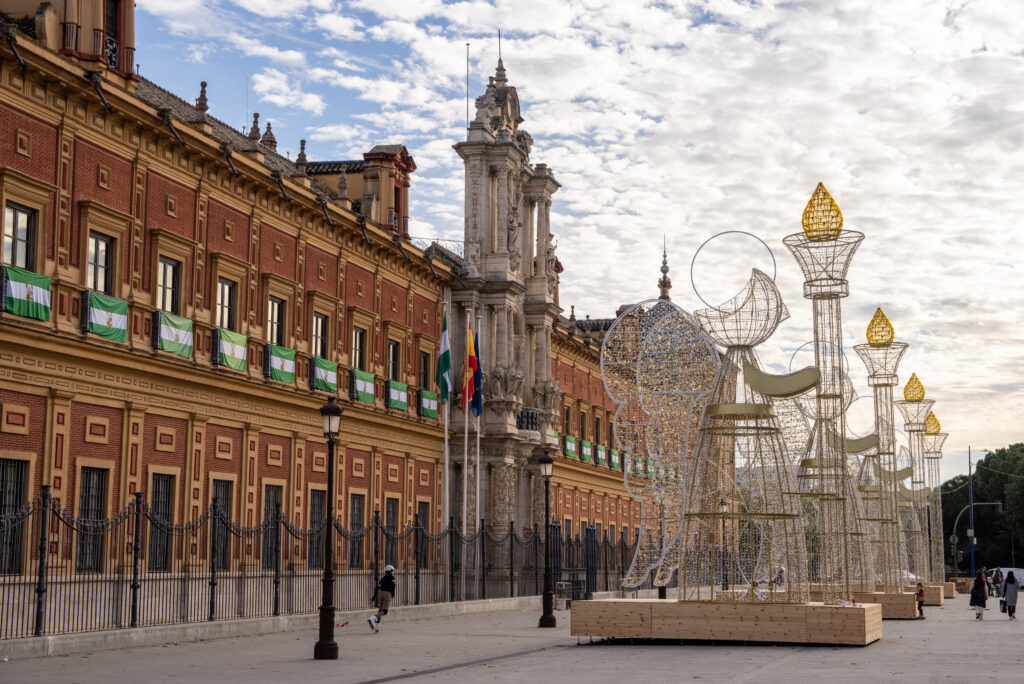
Seville in December
If you’re thinking of visiting Seville in December, the average temperature hovers around 16°C/60°F – pleasantly mild for this time of year. You’ll need a jumper or jacket while browsing the Christmas markets and you may even get a little rain, but the average rainfall is still only 6.5 days in the entire month (I was unfortunate enough to experience one of them on a recent trip back)!
Seville in January
Seville shows similar mild temperatures and rainfall in January. This is a great month to take in the Three Kings Parade (5th January) and visit world-class museums and historic sites.
Seville in February
The daytime temperatures jump by a couple of degrees in February and rainy days are less likely too. This is a time for cycling in Maria Luisa Park and along the river shores, taking a walking tour of Seville’s vibrant neighbourhoods or hopping on a cruise along the Guadalquivir River.
Best Things to do in Seville in Winter
If you’ve been pondering what to do in Seville in winter, look no further. Below, I’ve compiled a list of the top attractions to visit during your stay. You may not have time to see them all, but you can easily mix and match them to suit your interests.
Explore Seville Cathedral & La Giralda
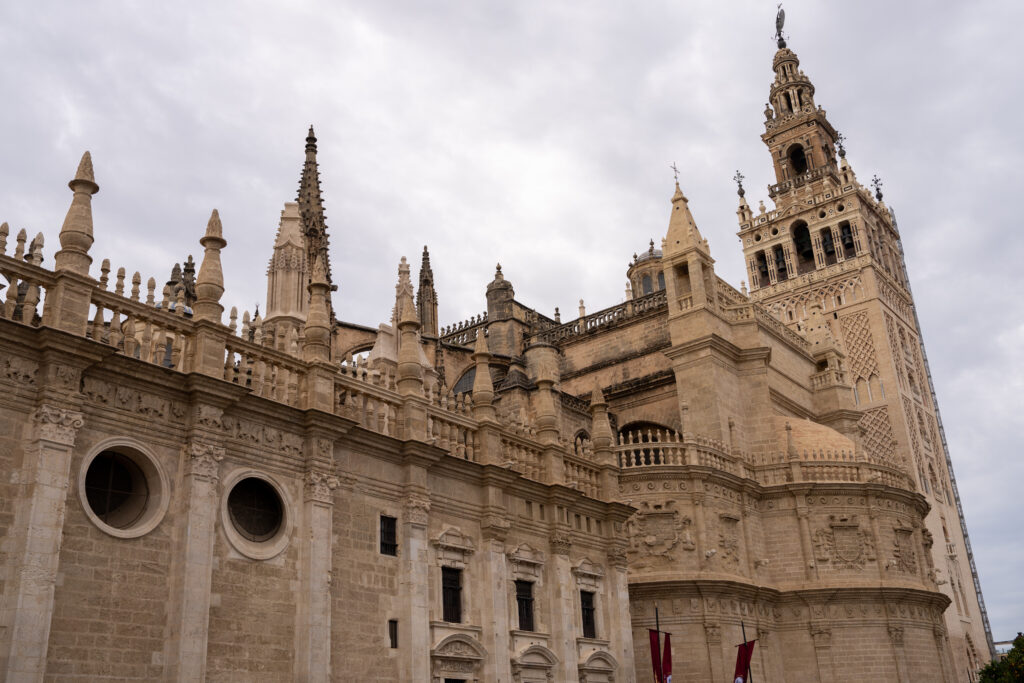
Amid the cobbled streets of Santa Cruz neighbourhood, surrounded by orange trees and tall palms is the iconic Seville Cathedral. This is more than just a cathedral – it’s the largest Gothic cathedral in the world, a UNESCO World Heritage Site and the resting place of Christopher Columbus.
The cathedral you see today was built on the site of an ancient mosque and there are dozens of highlights to see on a guided tour. Don’t miss the artworks by Goya and Murillo. View the domed ceiling of Chapter House, the gilded, Gothic wood carvings of the Main Chapel and step inside the Sacristy and Treasury. Head outside to Patio de los Naranjos – a pretty area lined with orange trees and water features.
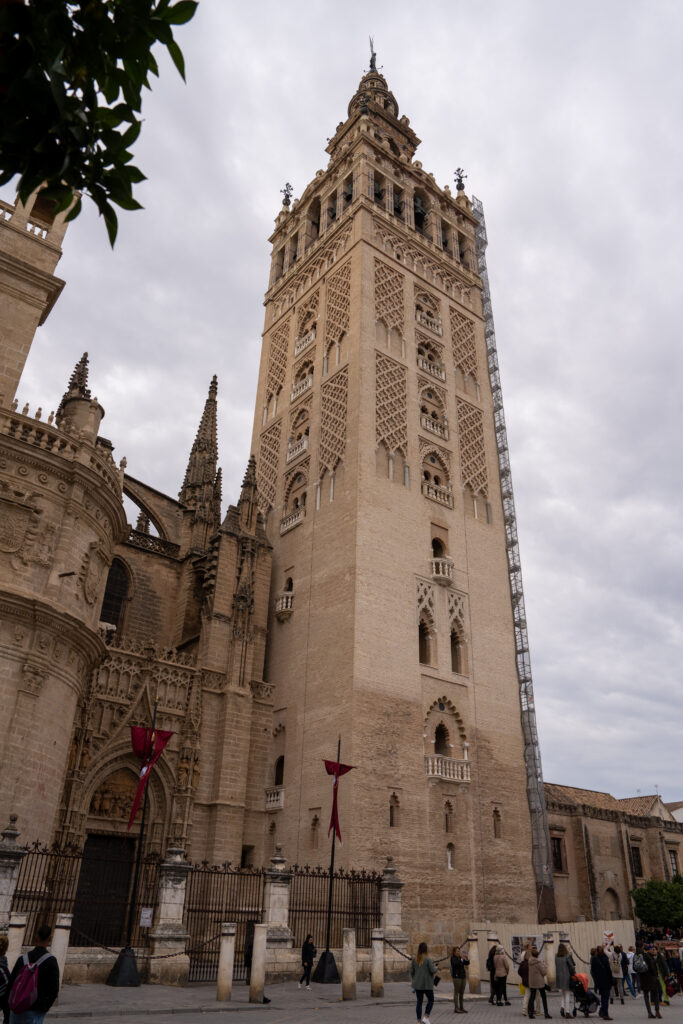
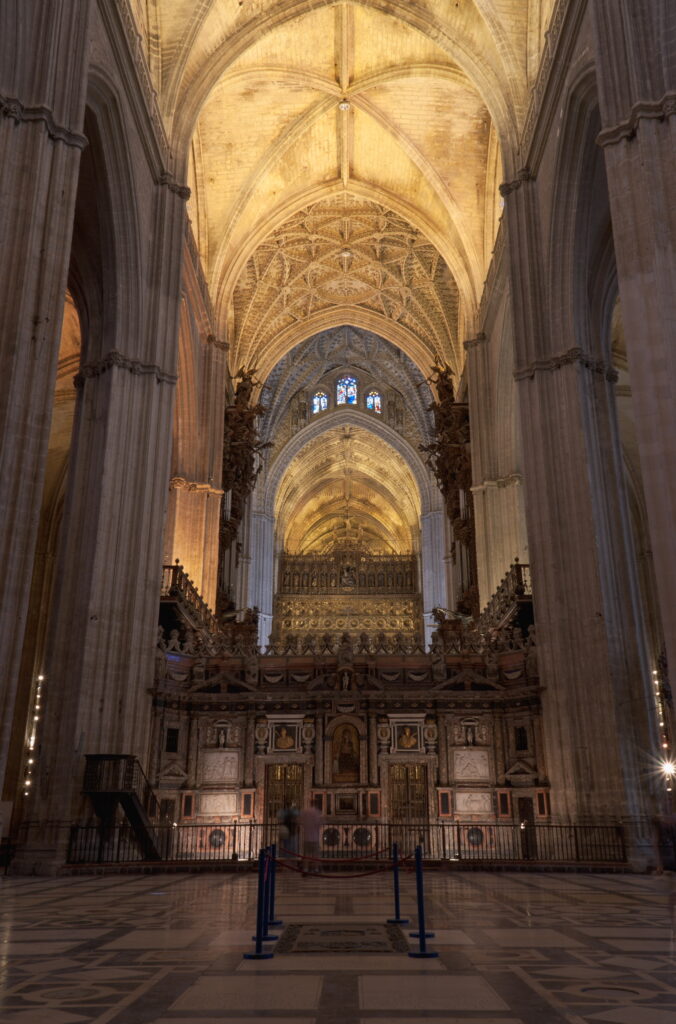
Afterwards, climb the adjoining bell tower of La Giralda. A symbol of Seville, La Giralda (The Weathercock) is part of the original mosque that stood on the site. You may recognise its design as there’s an identical tower in Marrakech, Morocco!
During a visit, see the famous 24 bells and gain exquisite views of the entire city and countryside. Don’t forget your camera!
Tip: It’s worth buying your combined Cathedral & Giralda ticket in advance to skip the long lines. Even on a wet Monday in December the line was at least 40 people deep when I visited!
Learn About Moorish History at the Real Alcázar
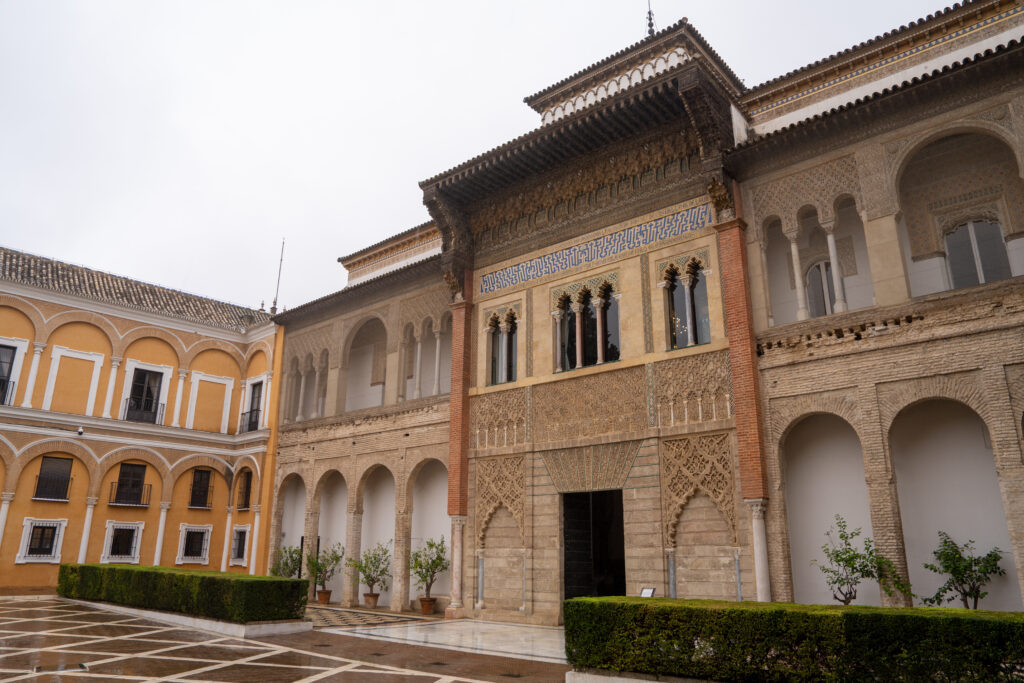
The Real Alcazar is just a few minutes walk from Seville Cathedral. The Royal Palace was originally designed for Cordoba’s governors, before becoming the home of monarchs. The current king of Spain still uses the palace as his residence when visiting Seville!
Outside the palace, wander through courtyards aside reflective pools, learning about the incredible Mudéjar architecture. Inside, admire keyhole archways, explore the stately Ambassador’s Hall and discover more about the characters who called this opulent space home.
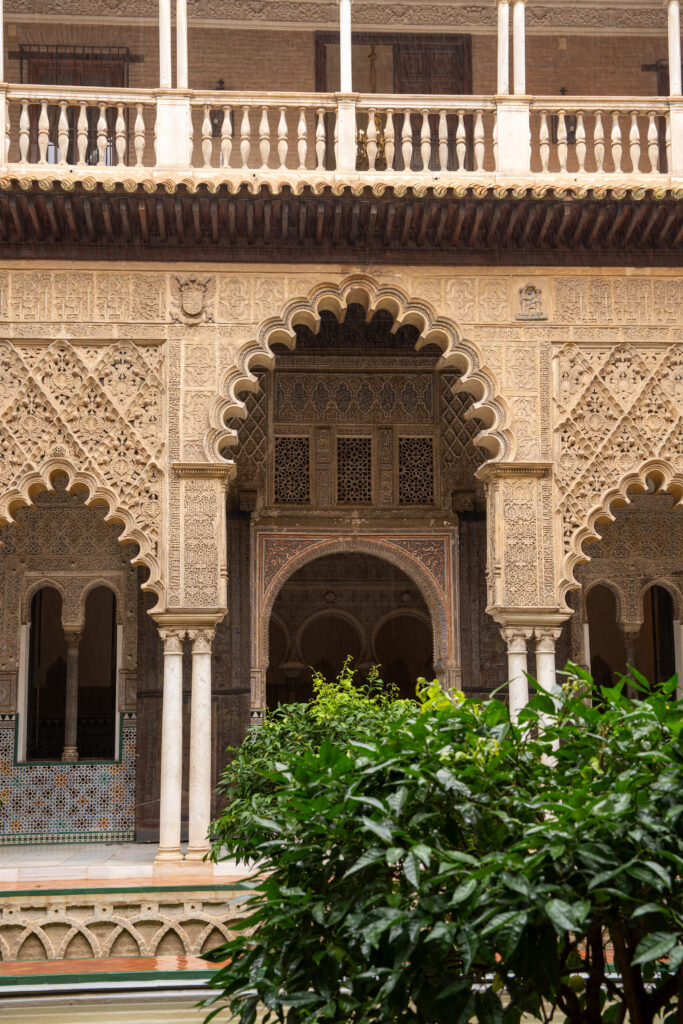
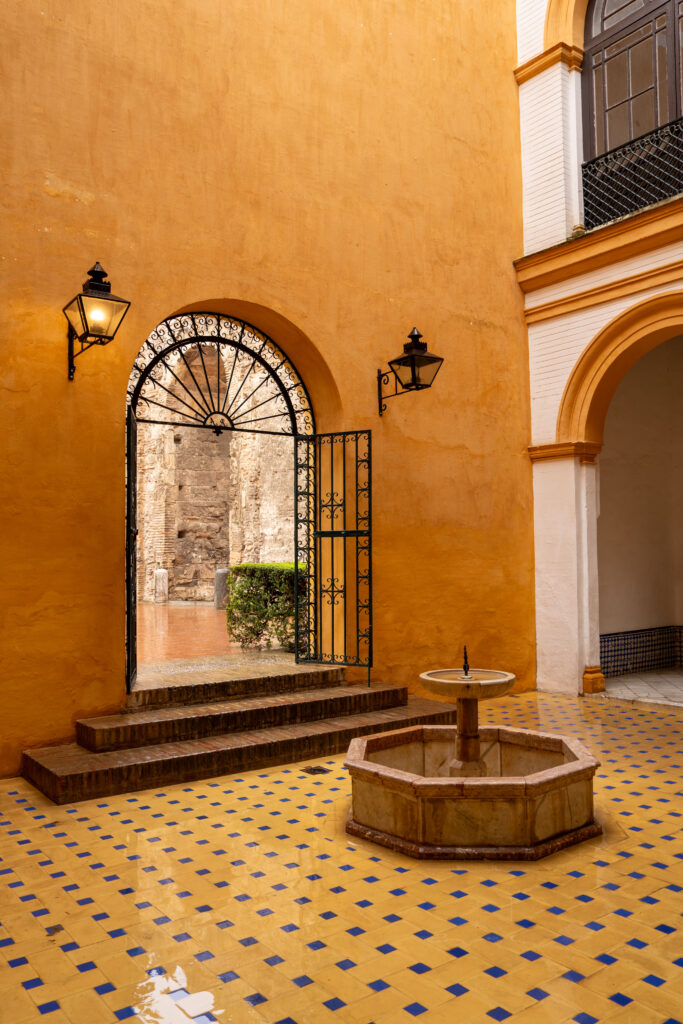
The expansive gardens are a further highlight – punctuated with towering palms, water features and ornate Moorish pavilions. The Real Alcázar is a photographer’s dream – a must-see for architecture, history enthusiasts and Game of Thrones fans – it was a filming location for the TV show!
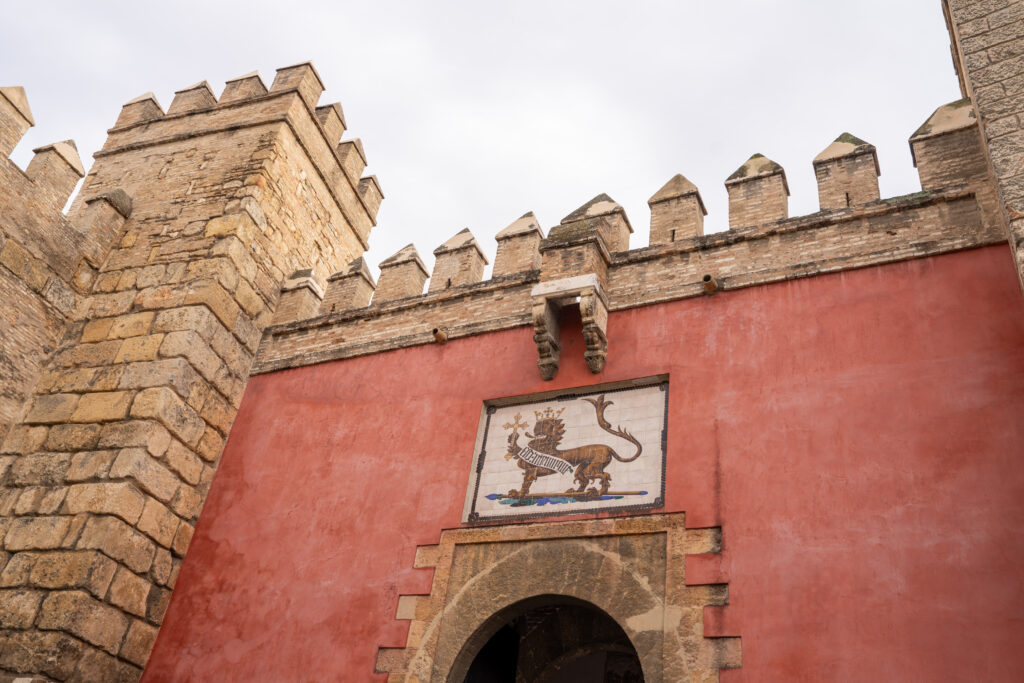
Tip: The entrance to The Real Alcazar and the ticket booth are in different locations (the ticket booth is by the exit in Patio de Banderas). Again it’s worth buying tickets online in advance so you can proceed straight to the Lion’s Gate entrance, and avoid the lengthy queues. If you do have to buy tickets on the day, note that they don’t accept cash.
Snap a Winter Selfie at Plaza de España
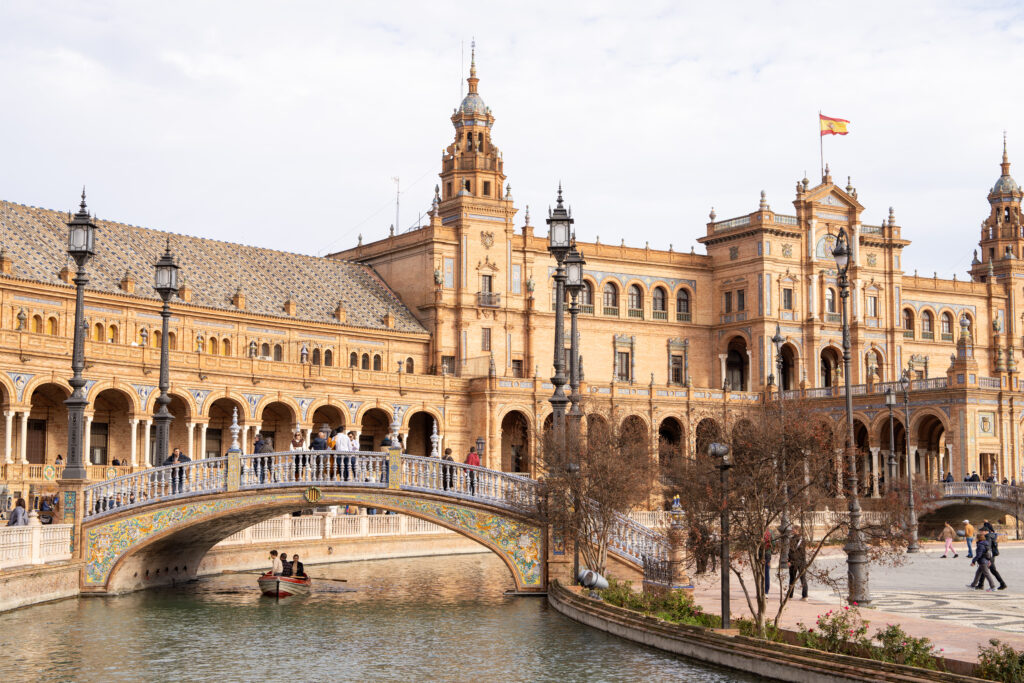
A mere 10-minute stroll from the Real Alcázar is one of Seville’s top Instagram spots – Plaza de España. The free-to-visit, half-moon plaza was originally constructed for the 1929 Ibero-American Exposition – designed in a combination of Moorish, Renaissance and Baroque Revival styles.
While meandering around the exterior, observe the beautiful, tiled frescoes symbolising all of the Spanish provinces. Walk by Vincente Traver fountain and pose for photos on quaint bridges flanked by old-fashioned gas lamps next to the canal.
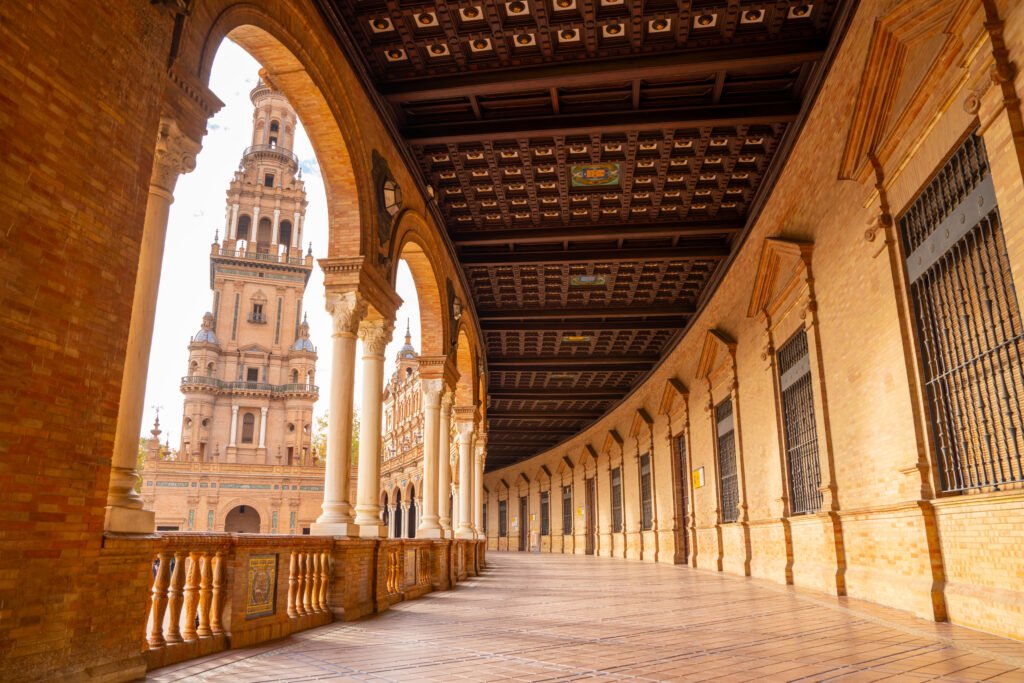
Although you can’t enter the buildings of Plaza de Espana, it’s still worth visiting the location, if only to step back in time to the 1920s and imagine city life as it was in Seville a century ago. If you’re lucky, you may wander to the melodic sounds of Spanish guitarists playing in the courtyard.
Discover Seville’s Art Galleries & Museums
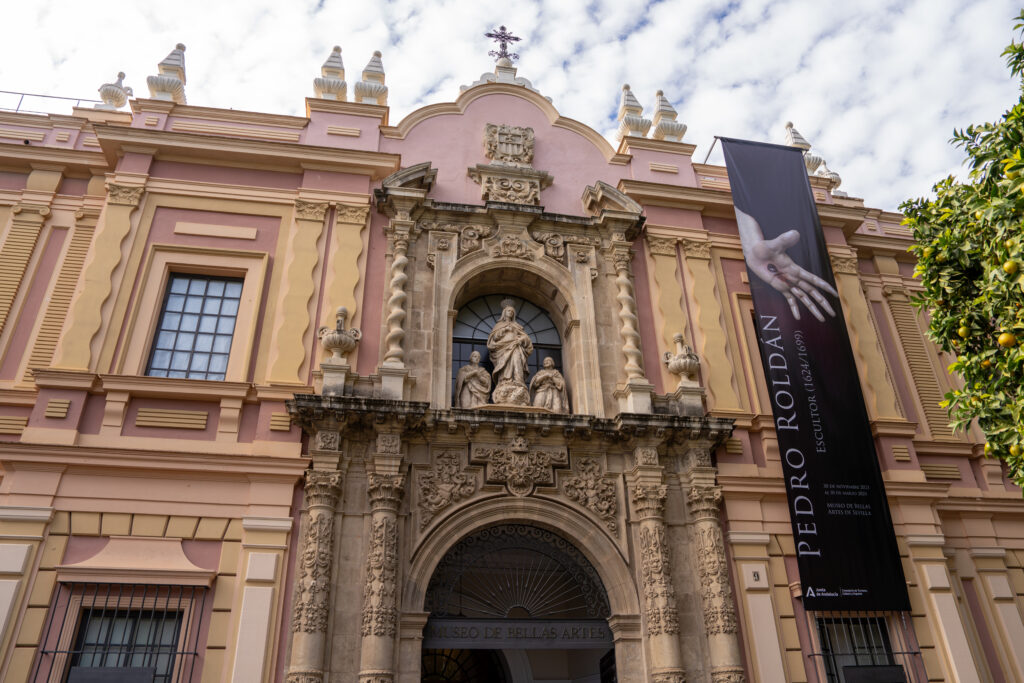
A must-visit for avid explorers, Archivo de Indias sits conveniently between Seville Cathedral and Parque de España. The vast repository was built in 1785 to house documents, maps and artefacts of expeditions to the New World.
And if it’s art you’re interested in, head for the Museo de Bellas Artes near Plaza de Armas. Set inside a 17th-century convent with pretty patios, it showcases artwork by famous Spanish artists including El Greco, Zurbarán and Murillo.
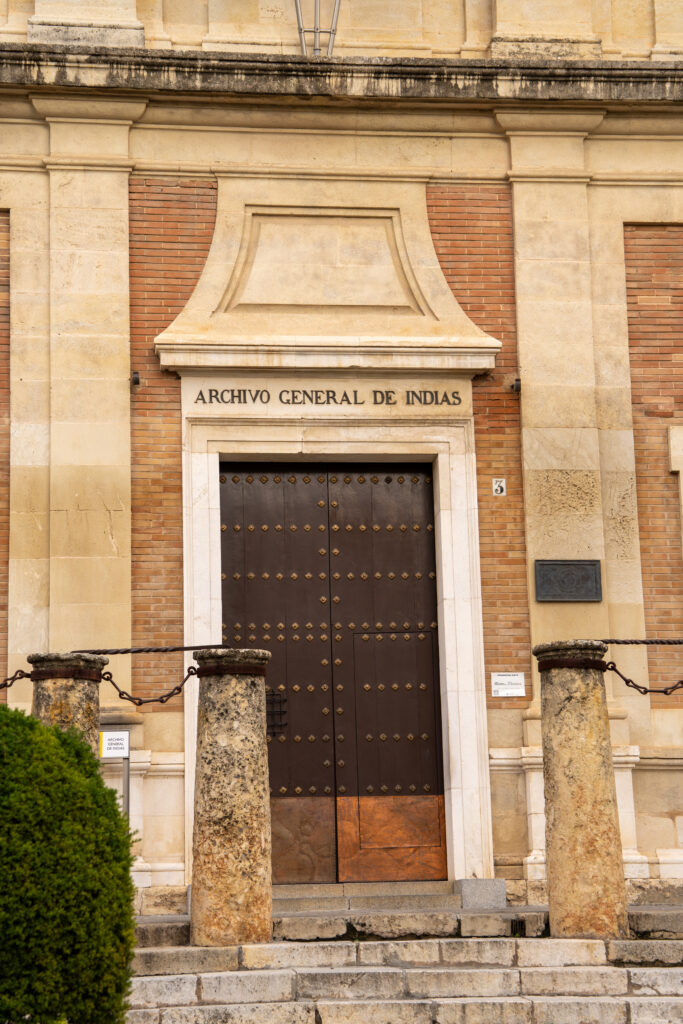
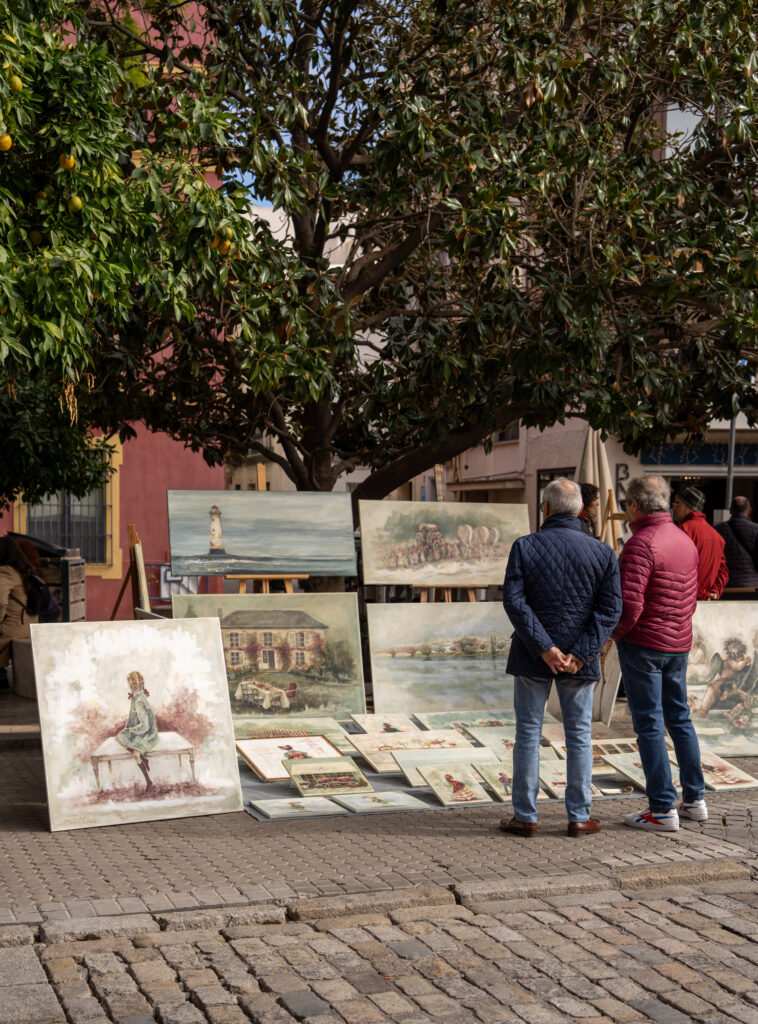
Also, you can’t visit Seville without making a stop at the Flamenco Dance Museum. The 18th-century building located north of Seville Cathedral pays homage to all things flamenco from the history and culture to costumes and music. If you time your visit well, you may even catch a live traditional flamenco show (you can buy show & museum tickets here).
Stroll Along the Elevated Metropol Parasol
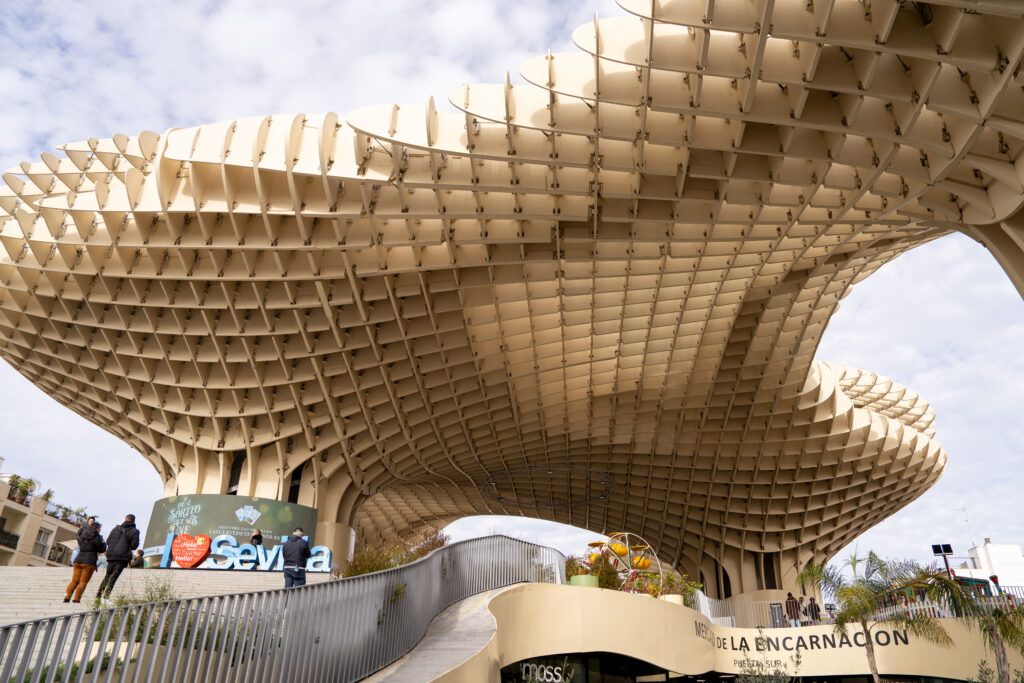
Las Setas (The Mushrooms), otherwise known by its official name, Metropol Parasol, represents a fine example of how modern-day architecture can blend with centuries-old structures.
This, the largest wooden structure in the world, is engineered from reinforced steel and Finnish pine, comprising a honeycomb design, six huge parasols and winding, elevated walkways that overlook the city streets and plazas.
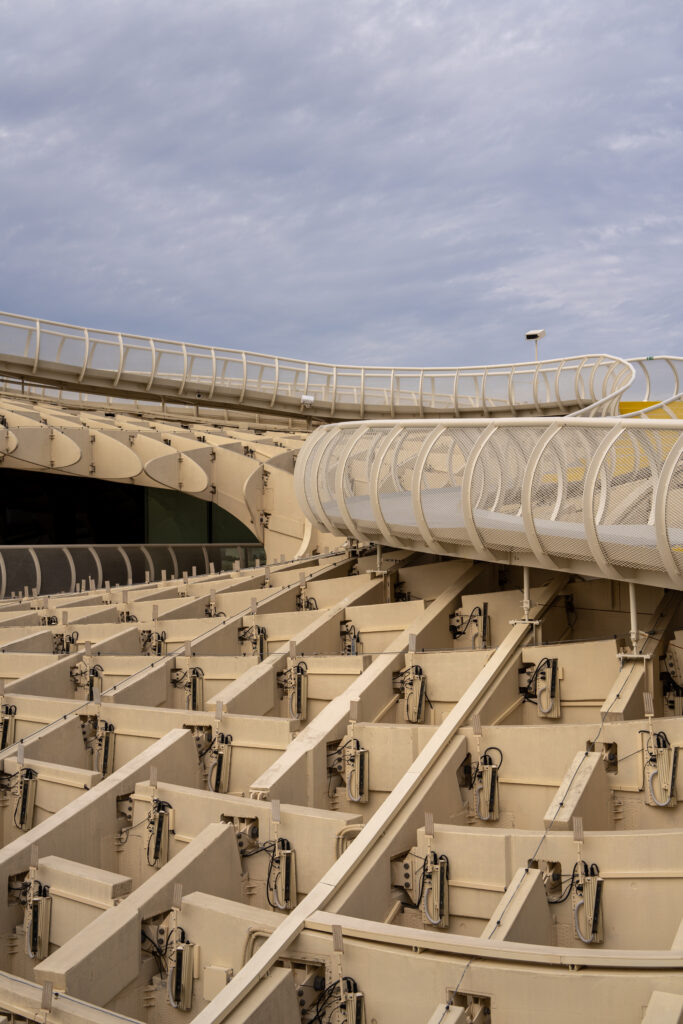
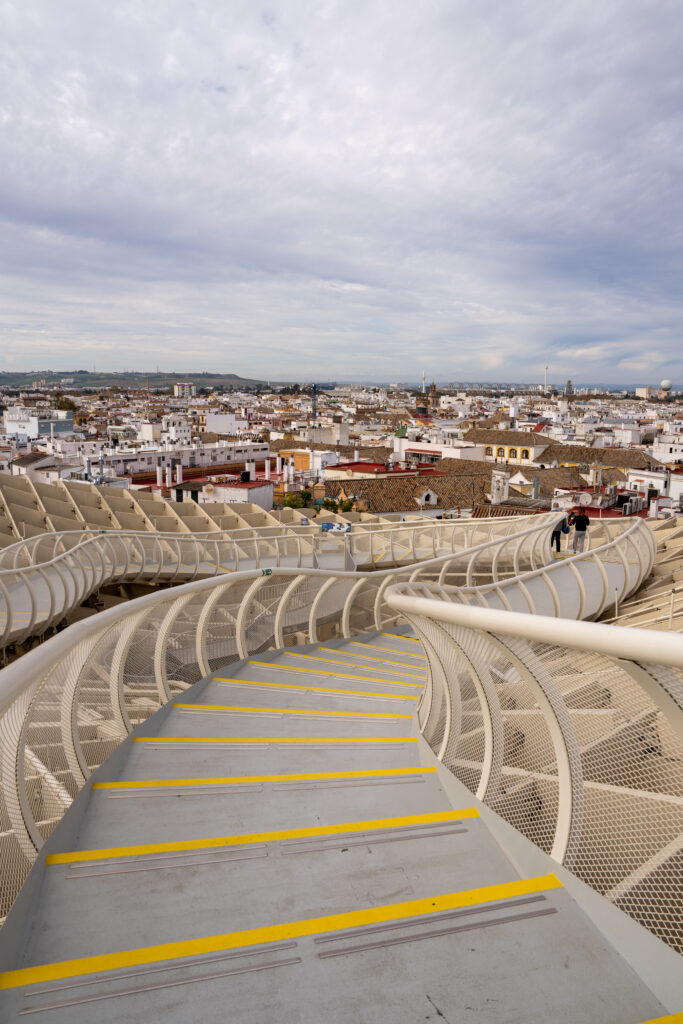
Visit Seville in winter and enjoy a pleasant walk, observing the city from above and photographing the views (the sunset is magical). Also, if time permits, pop into the Antiquarium, a museum below housing all the archaeological findings from the site.
Tip: At €15 per adult I think it’s a little overpriced for a short visit. You can still appreciate the structured beauty from below if you’re watching your pennies. Also, if visiting during the festive season, there’s a lovely Xmas market taking place below the parasol.
Torre del Oro & Winter Riverboat Cruise
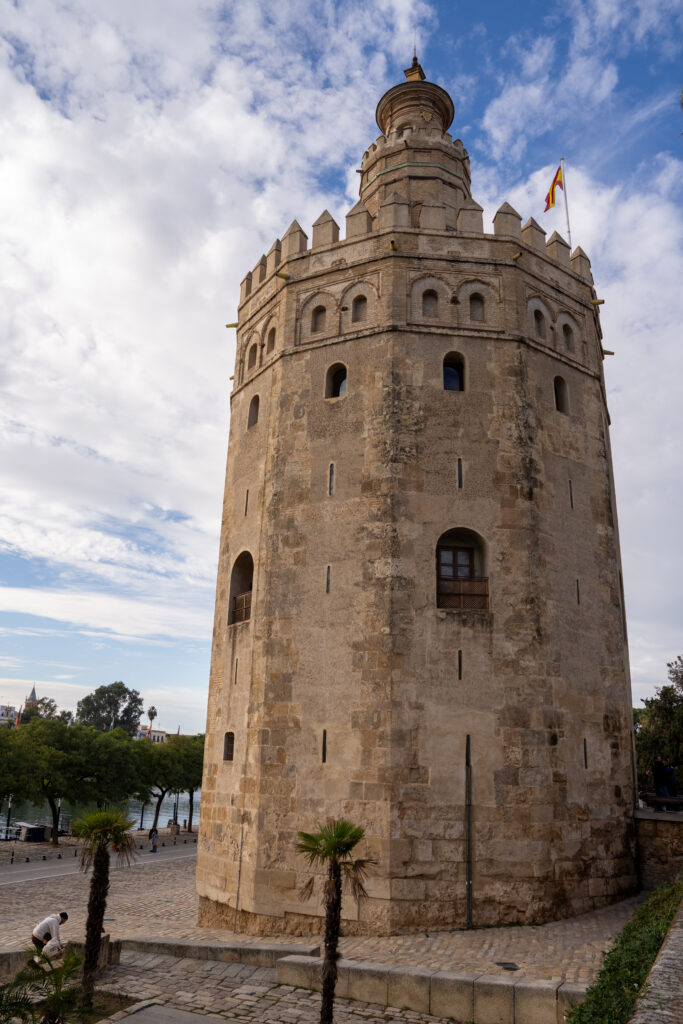
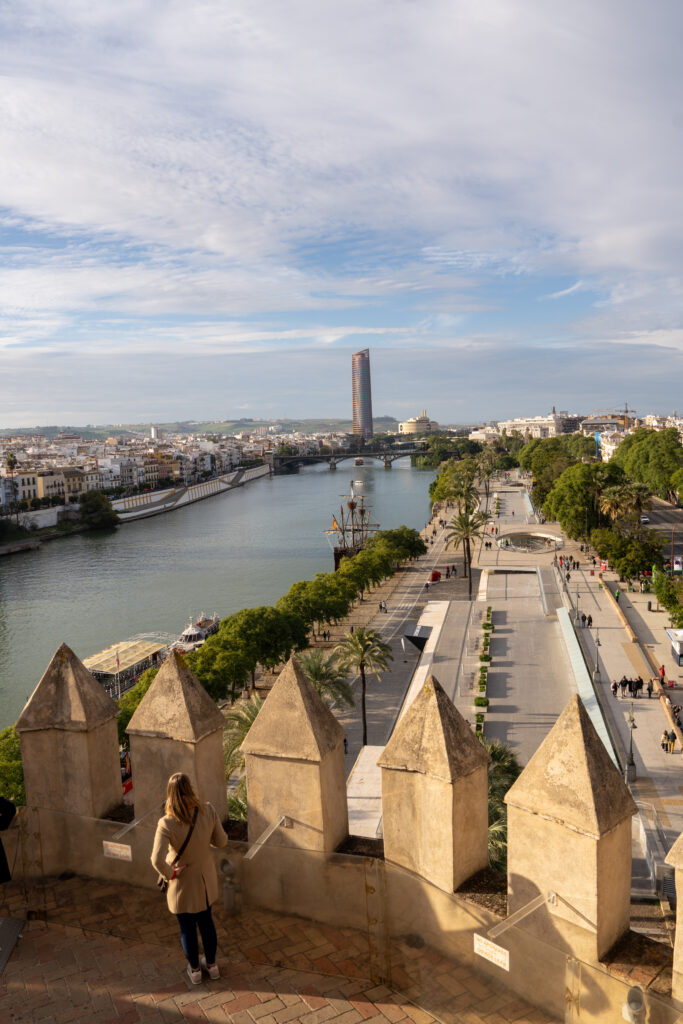
On the river’s edge near San Telmo Bridge sits the 13th-century Torre del Oro (Tower of Gold). The watchtower was originally built to monitor the shipping trade and to warn against unwelcome visitors approaching from the river. The 36-metre high behemoth hidden between pretty plants and palm trees is now home to Seville’s small Naval Museum.
There are many stories as to how the tower got its name. Some say that upon its construction, the tiles decorating the roof were made from gold. Others say the tower was used to house treasures plundered from America’s expeditions. You can gain more information on a visit and achieve stunning views of the river from the roof terrace observation point.
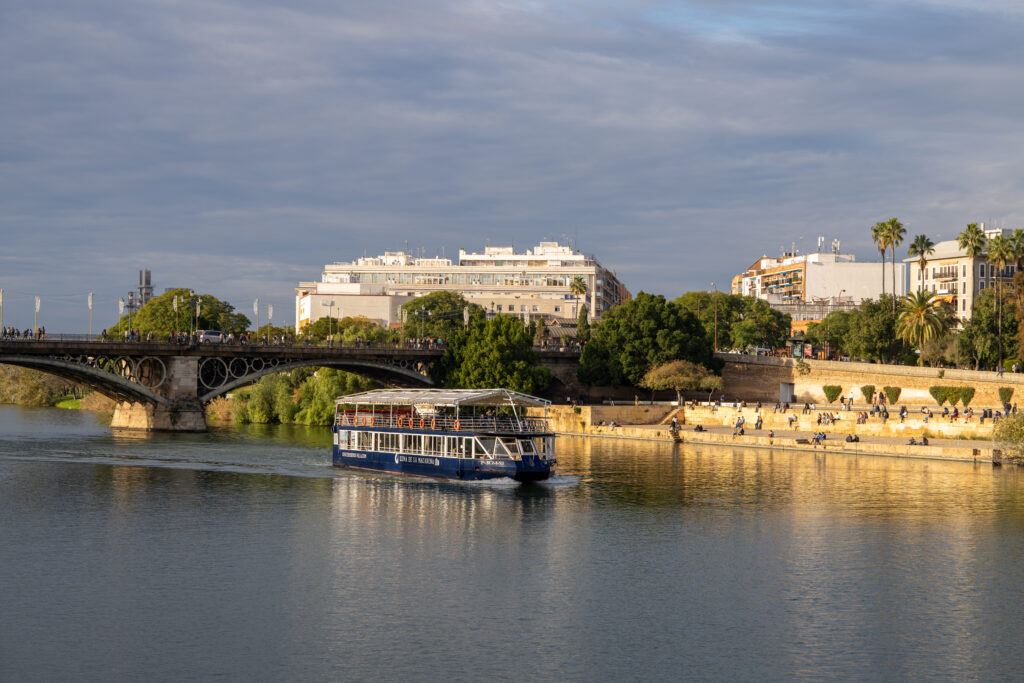
If you now find yourself suitably intrigued by Seville’s seafaring heritage, then hop aboard a riverboat cruise. The boats depart nearby the Torre del Oro, and you’ll get to see Seville’s attractions from a unique perspective.
Sample Tapas in Seville’s Best Spots
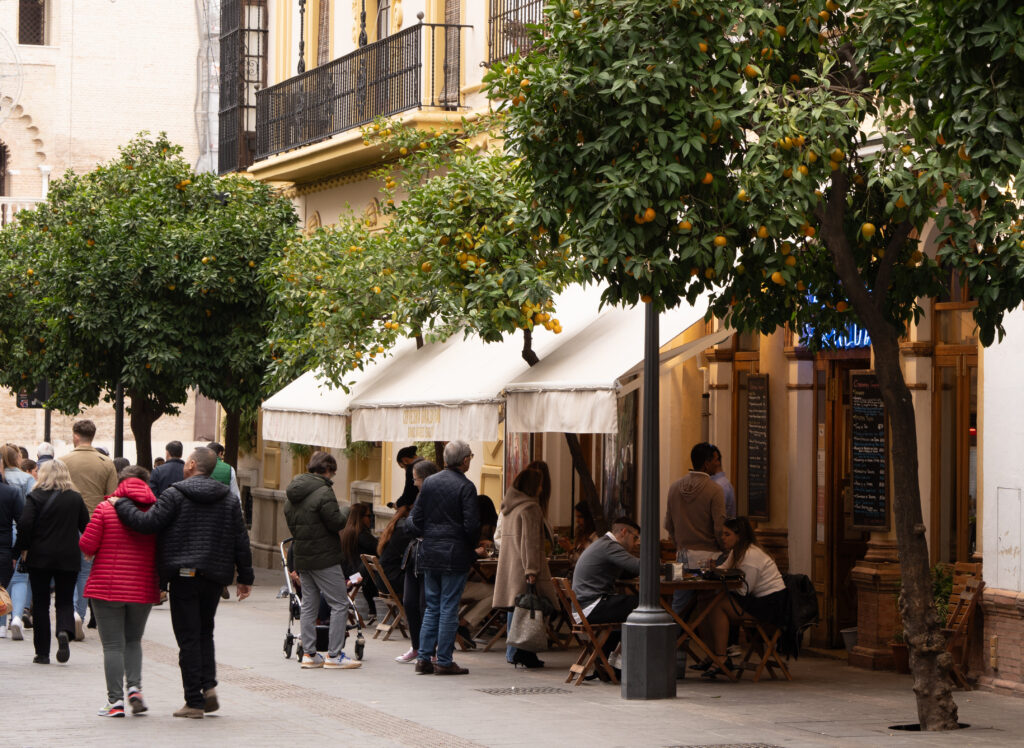
There are hundreds of amazing tapas bars in Seville, but for the décor alone, head to Cerveceria Giralda Bar a couple of minutes from Seville Cathedral.
Hidden behind the unassuming facade are the remains of a 12th-century Arabic hammam decorated with Azulejo tiles and arcade ceilings! The menu doesn’t feature many veggie options, but it’s definitely worth popping in for an espresso or lunchtime glass of wine.
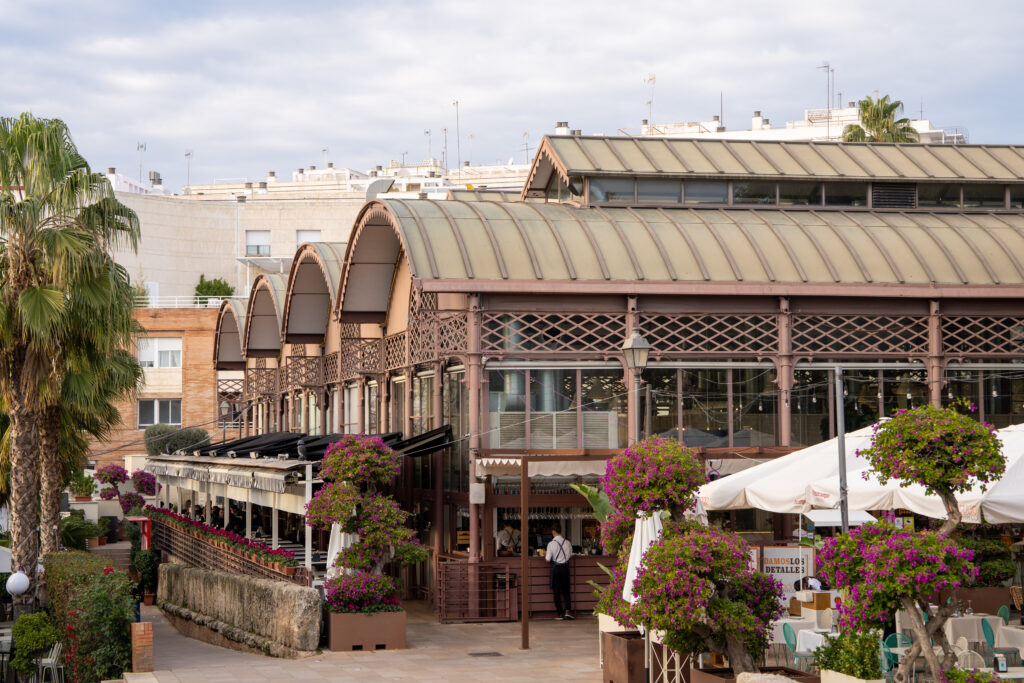
To gather snacks for a riverboat cruise, Mercado Lonja del Barranco near Real Maestranza is the place to be. The riverside food market was designed by none other than Gustav Eiffel! Alternatively, if you fancy something more plant-based, Veganitessen at Mercado del Arenal nearby offers an array of meat-free dishes.
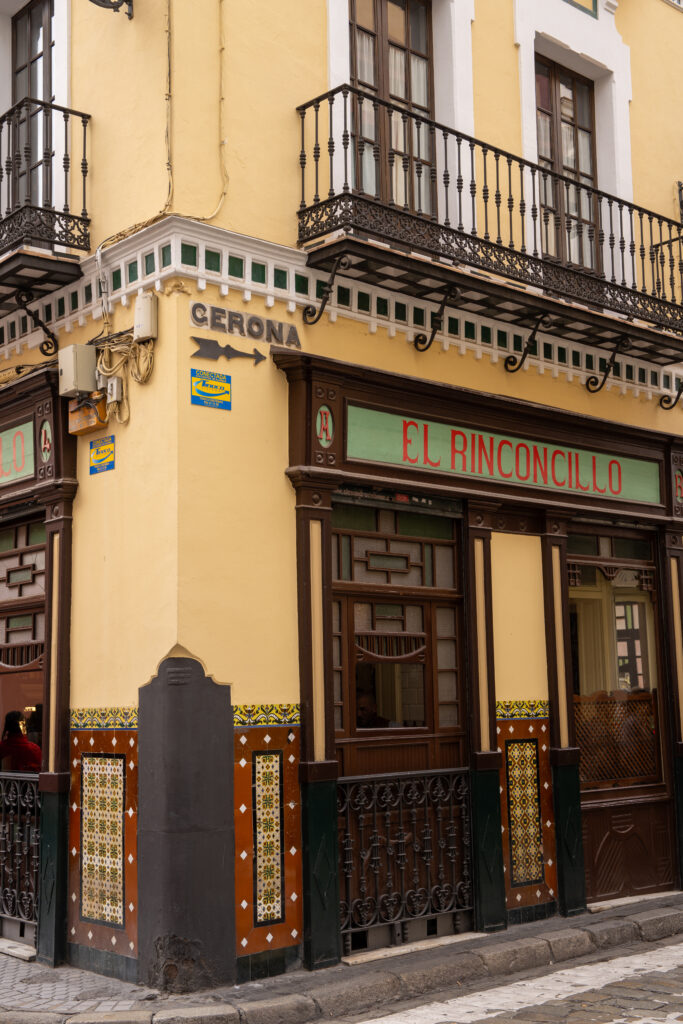
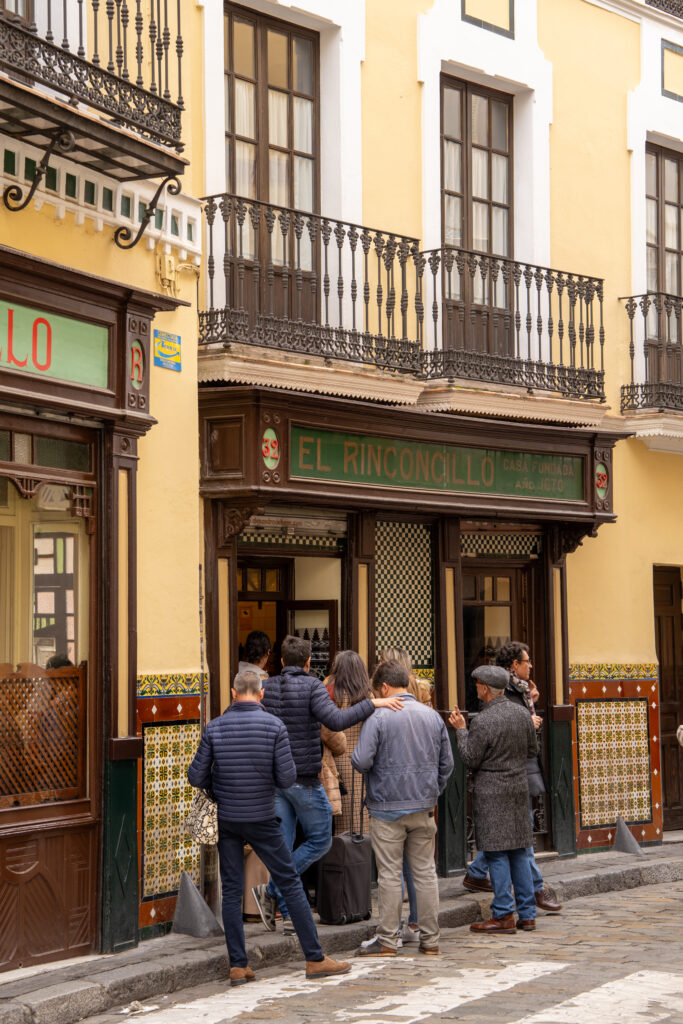
Following a sunset walk along Metropol Parasol, you may wish to pop into El Rinconcello a five-minute walk away. It’s Seville’s oldest tapas bar dating to 1670.
Alternatively, book a tapas tour and have a local show you the way instead!
Shop for Gifts at the Festive Markets
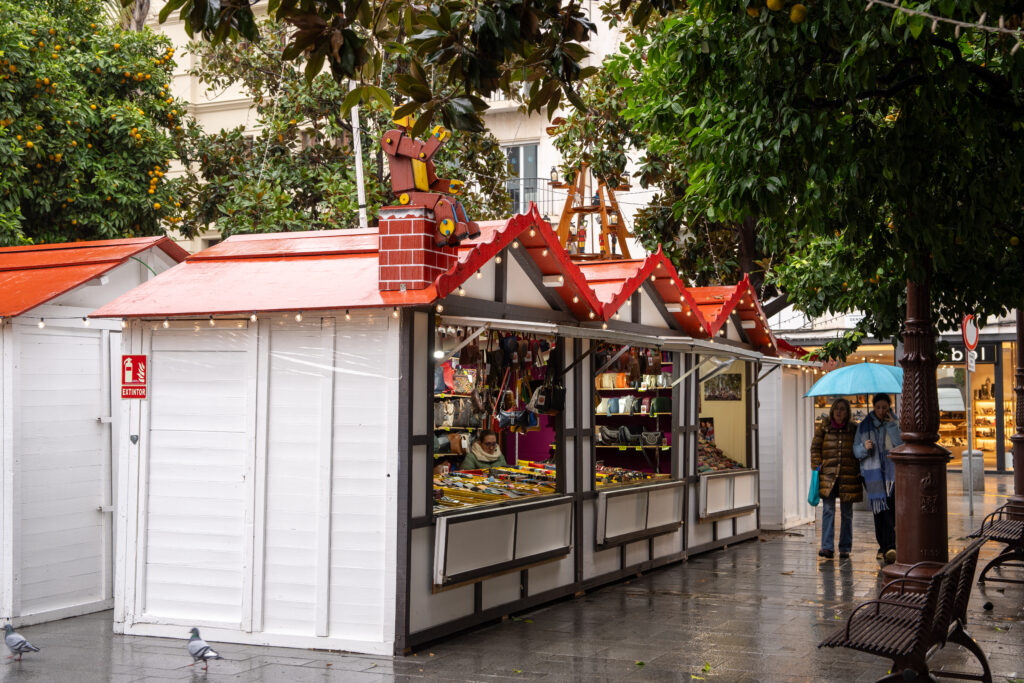
If you happen to be in Seville, Spain in winter the city hosts several of Andalucía’s best Christmas markets.
To support local craftspeople and small businesses, head for the Creative Artisan Fair at Plaza Nueva. There are over 60 wooden chalets selling hand-crafted souvenirs alongside decorated trees and twinkling festive lights.
Throughout December, the Fair of Bethlehem also takes place near Archivo de Indias. The streets are punctuated with nativity scenes and biblical figurines, accompanied by food stalls, art and entertainment.
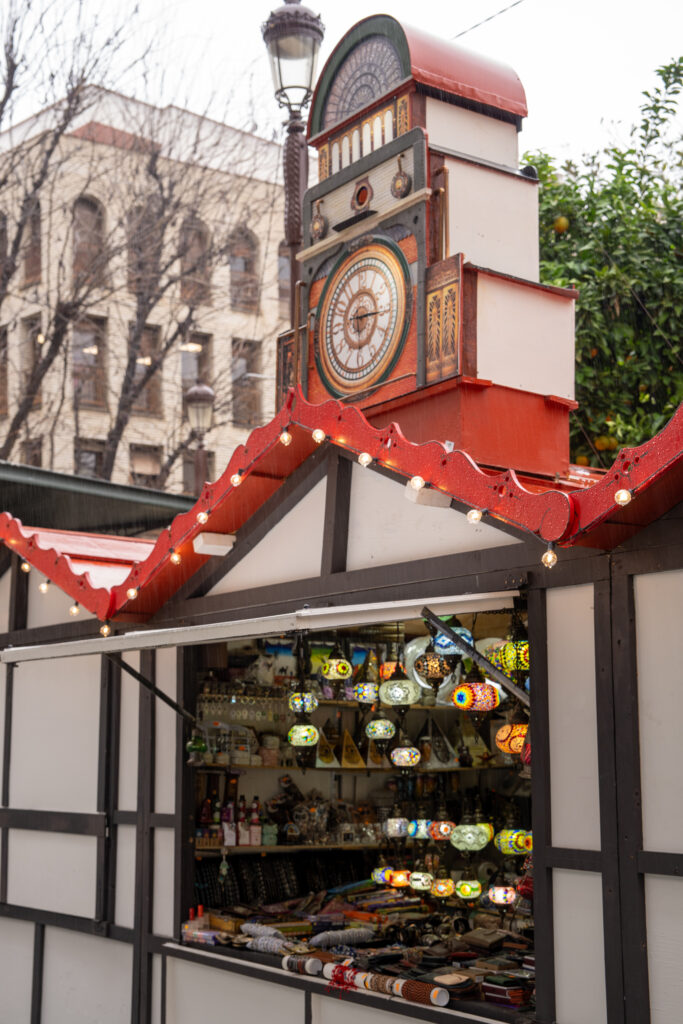
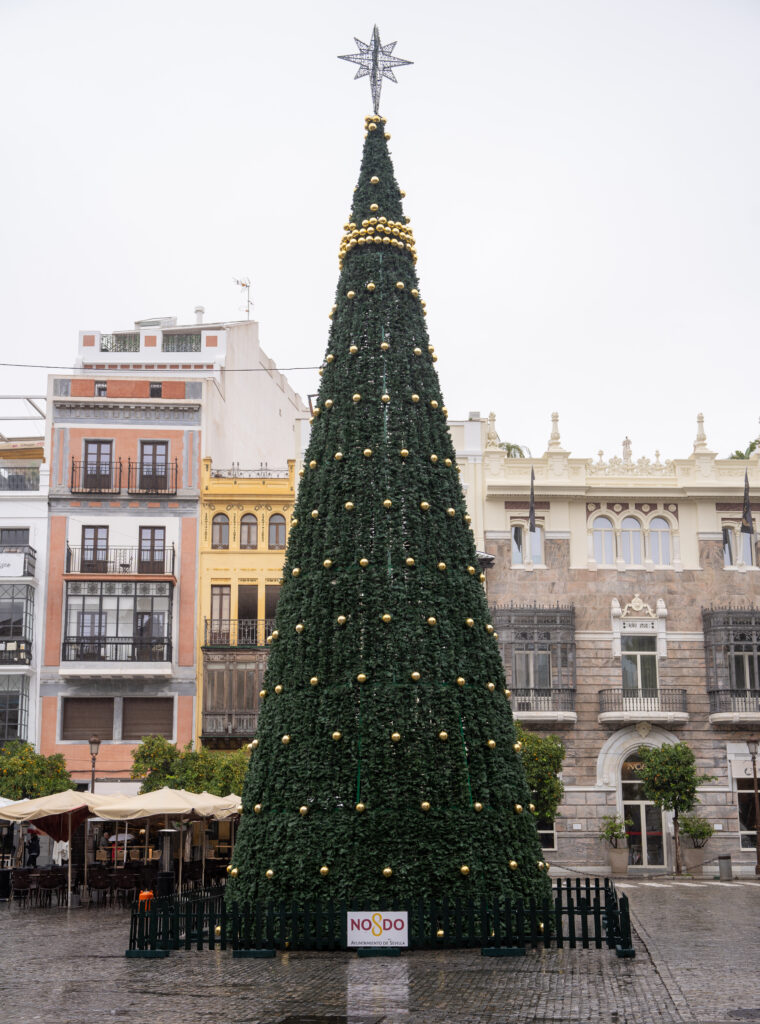
Seville Christmas Market on Plaza de Magdalena remains open until early January. It’s one of the city’s finest (and liveliest) festive markets with 50+ wooden chalets selling everything from turron (nougat) to gifts and local food.
When you’ve concluded your shopping expedition, head to Parque Prado de San Sebastian for a spot of ice skating and a steaming cup of mulled wine!
See an Authentic Flamenco Show in Triana
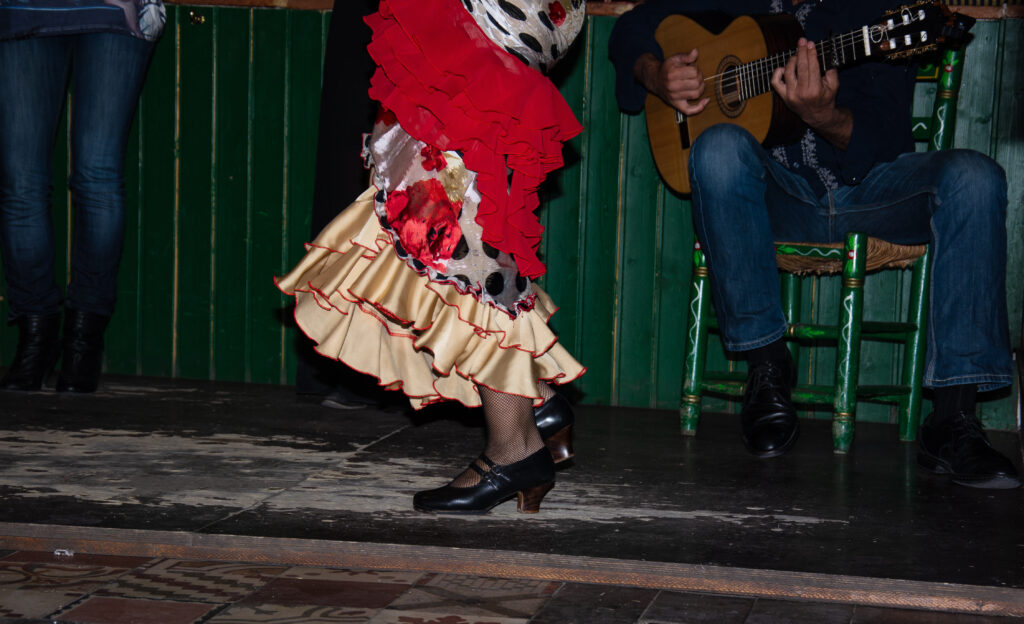
Although there are numerous venues in which to see flamenco in the city, one of the best (and most authentic) places is Teatro Flamenco Triana.
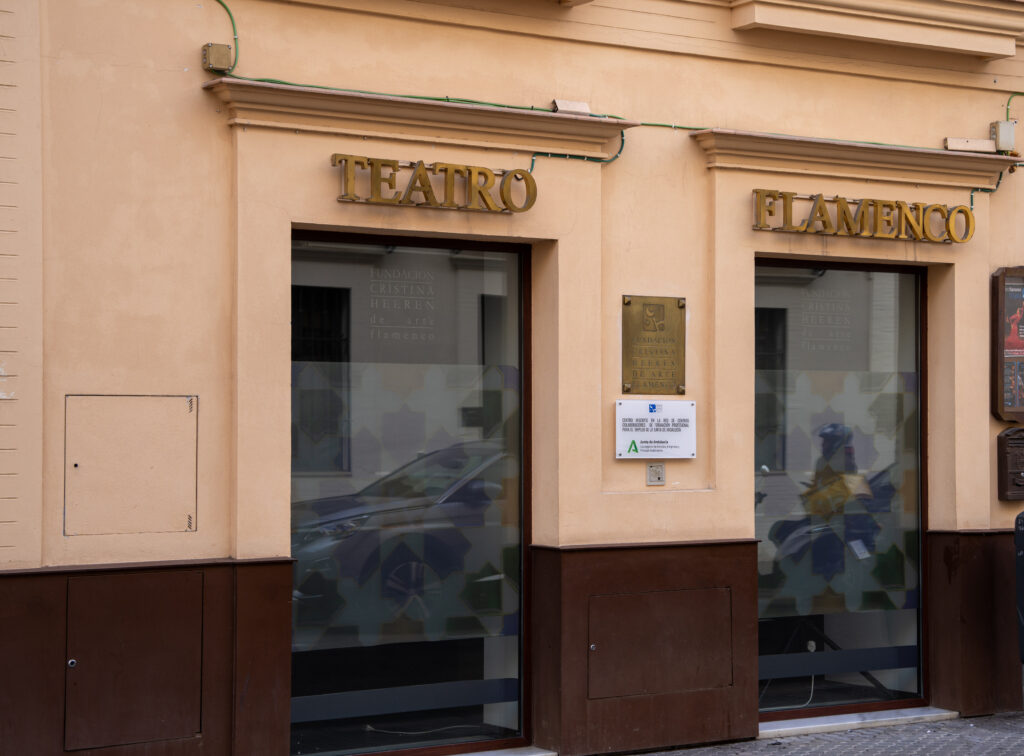
Here, the very essence of the art is brought to life. Sit back, relax and listen to the sounds of plucked Spanish guitars as men soulfully sing. Observe the skillful dancers as they swing their colourful skirts, clack castanets, clap and stomp their feet to the lilting musical rhythms. The spectacle is memorable and moving, and you may be lucky enough to see some of Spain’s most famous flamenco performers in this theatre.
If you feel like a bite to eat after the concert, venture to one of the many waterside bars and restaurants at nearby Calle Betis.
Celebrate New Year’s Eve in Seville
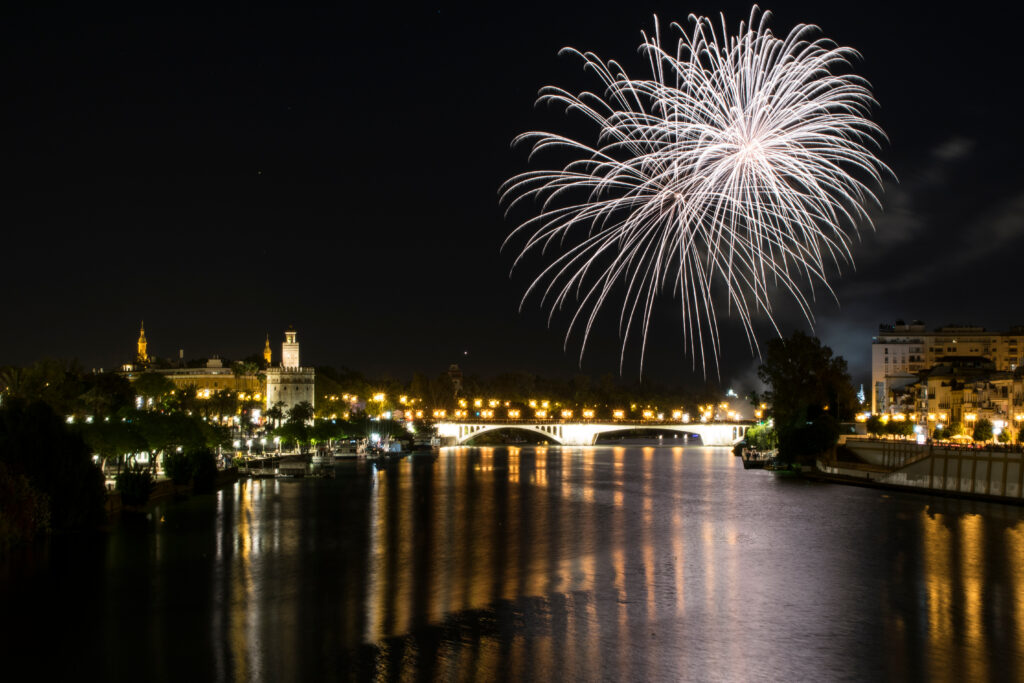
If your trip to Seville coincides with New Year’s Eve, you’re in for a treat! There are many ways to celebrate in the city. Book a meal in one of the city’s luxury hotels, enjoy a NYE cruise on the river, see a flamenco show or catch a fireworks display while sipping cocktails from the rooftop bar at EME Catedral Hotel.
However, should you prefer to celebrate in a more traditional manner, gather with locals at Plaza Nueva to welcome in the New Year, and don’t forget to take a bunch of grapes with you!
At each stroke of midnight, one grape is consumed – 12 in total, symbolising good luck for each month of the coming year. This is followed by much frivolity, music and celebration. Another tradition is eating churros (fried donut strips) dipped in hot chocolate after the bells. What a memorable way to start the New Year!
What not to do in Seville – Horse & Carriage Tour
While you’re touring the sights of Seville you may be tempted by the fairytale-looking horse & carriage rides that are offered all over the city. But I urge you to think twice about supporting this industry.
Life for these working horses is anything but a fairytale. They’re subjected to long days running in the loud and busy traffic, and they’re offered no shelter, food or water while they work. Several horses die each year due to heat and exhaustion. This is why the country is (too slowly) working on ways to phase them out in favour of electric buggies.
In the meantime, do your part by not adding to the demand for this animal exploitation.
Best Day Trips from Seville in Winter
If you’re seeking places to visit near Seville, look no further. Below, I’ve detailed a few of the best winter vacation day trips all within a couple of hours’ drive, train or bus ride.
Hop on the Fast Train to Cordoba
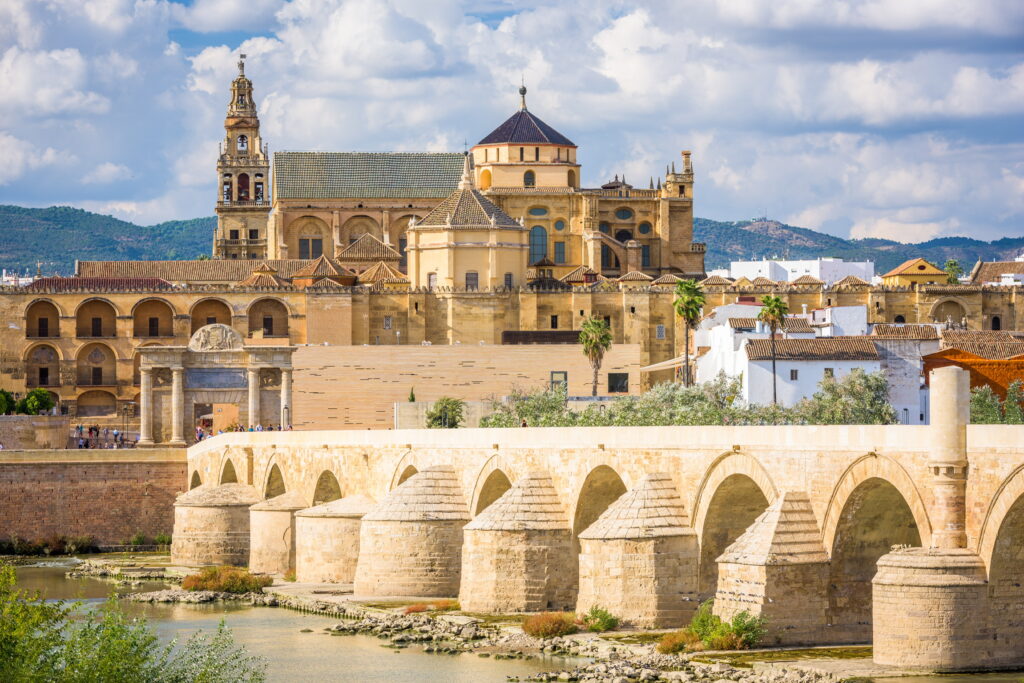
Jump aboard the AVE high-speed train from Seville’s Santa Justa Station and you’ll reach historic Córdoba in 40 minutes. Upon arrival, head for the awe-inspiring Mezquita (Mosque-Cathedral), a UNESCO World Heritage dating back to the times of Andalucía’s Arabic rule.
The Mezquita is famous for its keyhole archways and columns striped in colours of red and cream – dozens in rows, each a mirror reflection of the last. On a guided tour, you can learn all about the structure’s rich history and unusual architecture.
Wander Córdoba’s pretty streets are adorned with colourful window boxes. See the Almodovar Gate and Roman Bridge, visit Alcázar de Los Reyes Cristianos and make time to dine on ancient Moorish recipes at a local bodega.
Dive into Ancient History in Cadiz
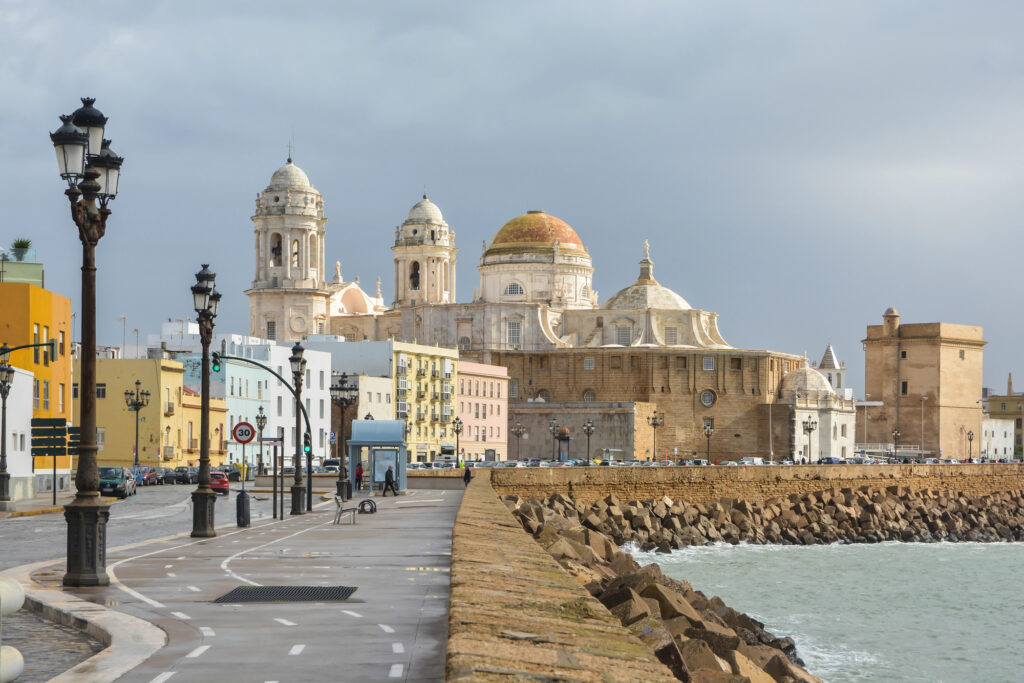
The historic port city of Cadiz is a city of two halves – one an ancient walled city founded by the Phoenicians, said to be the oldest city remaining in the Western world. The other – a modern strip, with hotels, office blocks, restaurants and golden sandy beaches.
On a winter day trip, explore the Old City. Wander narrow streets with colourful houses and take a coffee break in vast squares that overlook the domes and spires of Cadiz Cathedral.
Delve into the city’s history at the well-preserved Roman amphitheatre, observe La Caleta Beach from the ramparts of Santa Catalina Castle or see Cadiz and the coastline in all its glory from the Camera Oscura in Tavira Tower.
Andalucia’s Best Kept Secret – Arcos de la Frontera
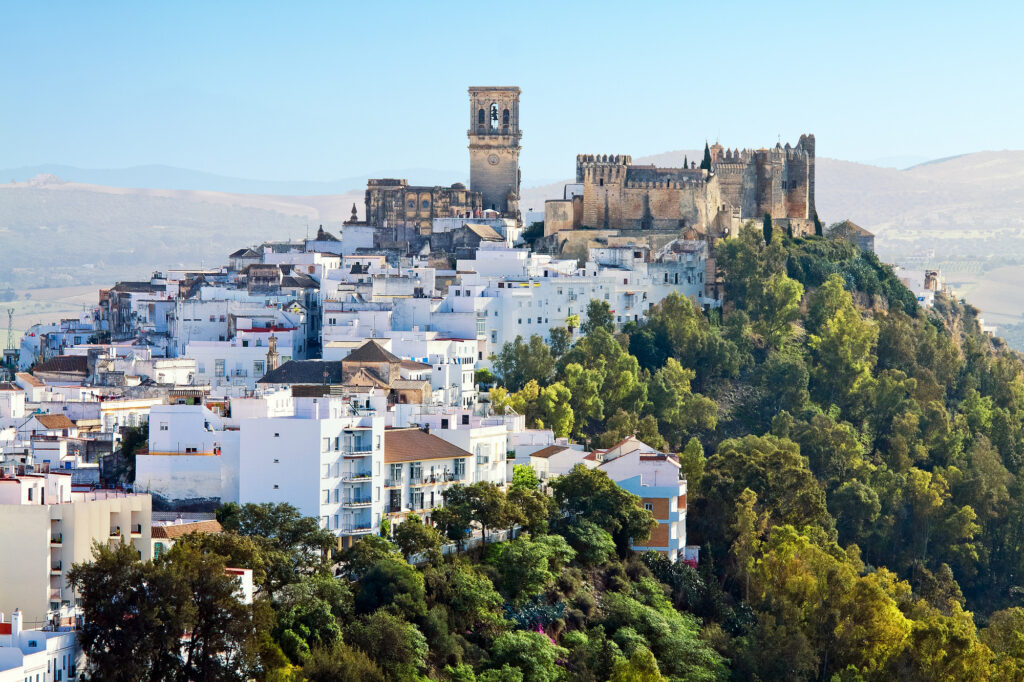
Nestled atop a cliff in the Sierra de Cadiz, just over an hour’s drive from Seville is the picture-postcard town of Arcos de la Frontera. White-washed houses dot the hillside, and beneath, expansive countryside beckons with excellent hiking trails.
On a day trip, you can visit the Basilica de Santa Maria de la Asuncion, the town’s oldest church with a Baroque tower and see the battlements of the ancient castle. If you’re travelling with kids, pop into Convento de la Mercedarias – for a donation, the nuns may allow you to ring the bells! As an additional bonus, they also sell delicious homemade baked goods…
If you’re seeking the best views, Plaza del Cabildo and El Parador – a hotel set inside a former magistrate’s building are the places to be. The Parador is also a perfect place to settle in for a delicious Andalucian lunch before browsing artisan craft shops for souvenirs in the town.
Make a Beeline for Malaga
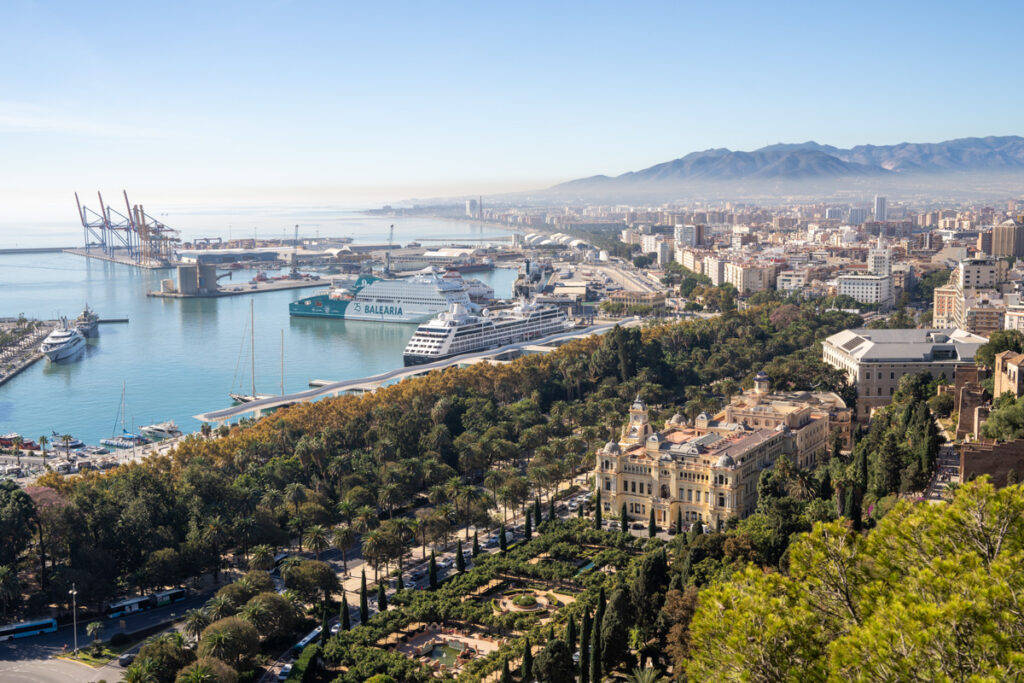
Winter in Malaga is a beach lover’s dream, with miles of lovely coastline to explore, you’re right in the heart of the Costa del Sol. This vibrant city has much more to offer the discerning visitor though.
Hop on a history trail of Malaga’s key sites, including the Roman Amphitheatre, the Malaga Alcazaba, and the Gibralfaro Castle. Sample local delicacies from Malaga’s traditional markets, and stroll along the wonderful waterfront area known as Muelle Uno.
Art lovers are catered for too, with visits to the Centre Pompidou, the Picasso Museum, and the Museo de Malaga taking centre stage.
The trip to Malaga takes a little over 2 hours by car or train, or you can book a private transfer & tour.
Related Reading: Malaga or Seville – Which Should You Visit?
You can now plan a trip to Seville in the winter months with plenty of ideas for things to do during your stay. The diverse landscapes of southern Spain are a surprise to many, and in winter, when temperatures are bearable, it’s a truly magical destination for all ages.

